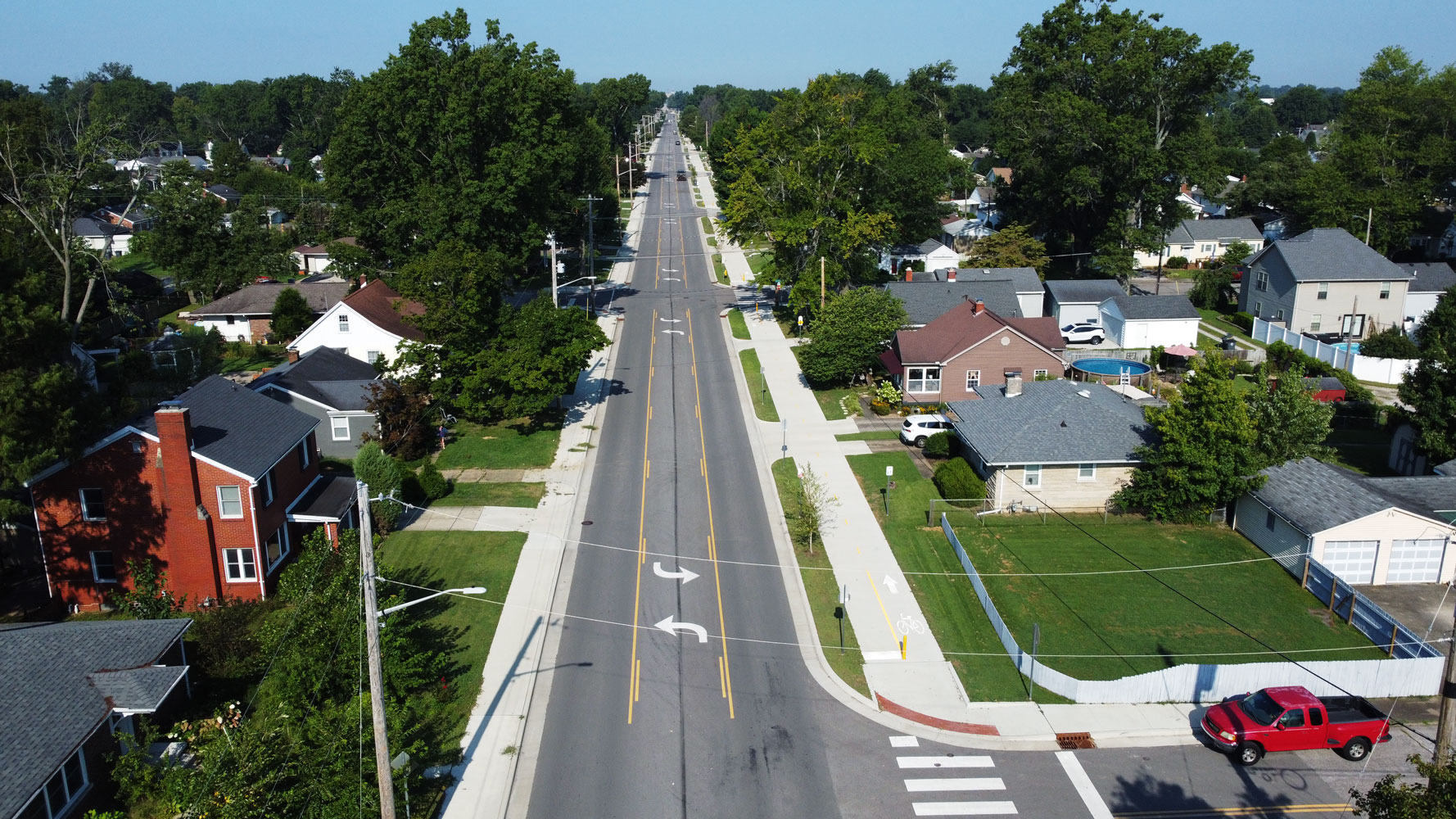Evansville Opens Walnut Street Corridor as Complete Street

The City of Evansville this week fully reopened the Walnut Street corridor, a showcase project designed as a “Complete Street” with new pavement, sidewalks, and a dedicated bike path.
The project reflects a modern approach to safer, more accessible streets, making Walnut Street an ideal example of what the city hopes to replicate through its adoption of the Vision Zero initiative.
“Walnut Street shows us what the future of Evansville’s streets can look like,” said Mayor Stephanie Terry. “It’s safer. It’s accessible. It’s built for everyone, no matter how they get around. This project is a perfect example of the kind of long-term change we want to see citywide through Vision Zero.”
Vision Zero is a global movement to eliminate traffic-related fatalities and serious injuries through smarter roadway design, data-driven enforcement, and community-centered planning. In July, the Evansville City Council advanced the city’s adoption of the initiative by passing a resolution declaring its support.
The local effort to bring Vision Zero to Evansville began with a personal request from Dr. Ahmed Khan, whose son, Muhammad, was tragically killed in a traffic accident in 2024. Dr. Khan approached city officials with a proposal: help him honor his son’s memory by committing to a safer future for all Evansville residents.
In response, the Office of Mayor Stephanie Terry convened a Vision Zero task force, led by Deputy Mayor Lindsay Snyder and with representatives from the City Engineer’s Office, Evansville Police Department, Evansville Fire Department, and other city officials; alongside key community organizations such as the Welborn Baptist Foundation and SWIRCA. Together, the group has begun developing a roadmap to embed Vision Zero principles into Evansville’s infrastructure and policies.
“Too many families in Evansville have been impacted by traffic crashes,” Mayor Terry said. “Vision Zero is about changing that. Every resident deserves to move around our city safely, whether they’re driving, walking, biking, or taking the bus.”
Vision Zero originated in Sweden in 1997 and has since spread to cities across the United States and the world. Its core philosophy is simple: no loss of life on our streets is acceptable. Unlike traditional approaches that place responsibility solely on individual road users, Vision Zero emphasizes systemic changes—such as safer street design, improved signage, speed management, and robust data analysis—to create a safer transportation network for drivers, pedestrians, and cyclists alike.
Evansville’s City Council resolution marked the second of three required steps to become an official Vision Zero city. First, municipalities must adopt a formal resolution; second, they must form a leadership committee; and finally, they must submit a Vision Zero application outlining safety goals, strategies, and implementation plans.
Evansville has submitted that application, and is awaiting a final response.
Meanwhile, Dr. Khan and a community partner have established a nonprofit organization to help raise funds that will support Evansville’s Vision Zero goals, from education campaigns to infrastructure improvements.
The Walnut Street corridor now stands as the first visible example of that commitment. As Evansville moves forward with Vision Zero, residents can expect more investments in safe, multimodal transportation options designed to make every trip - to work, school, the store, or home - safer and more reliable.



